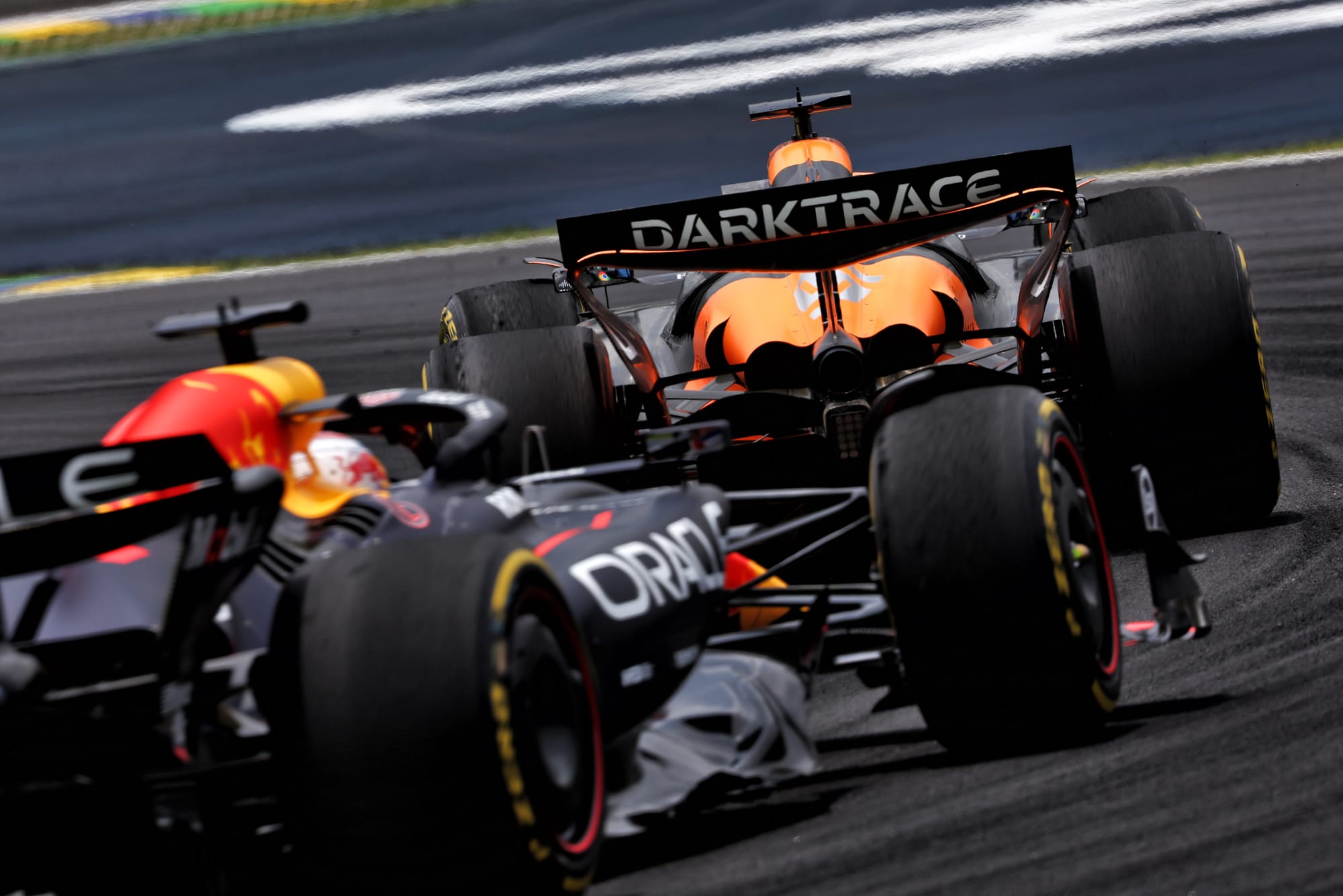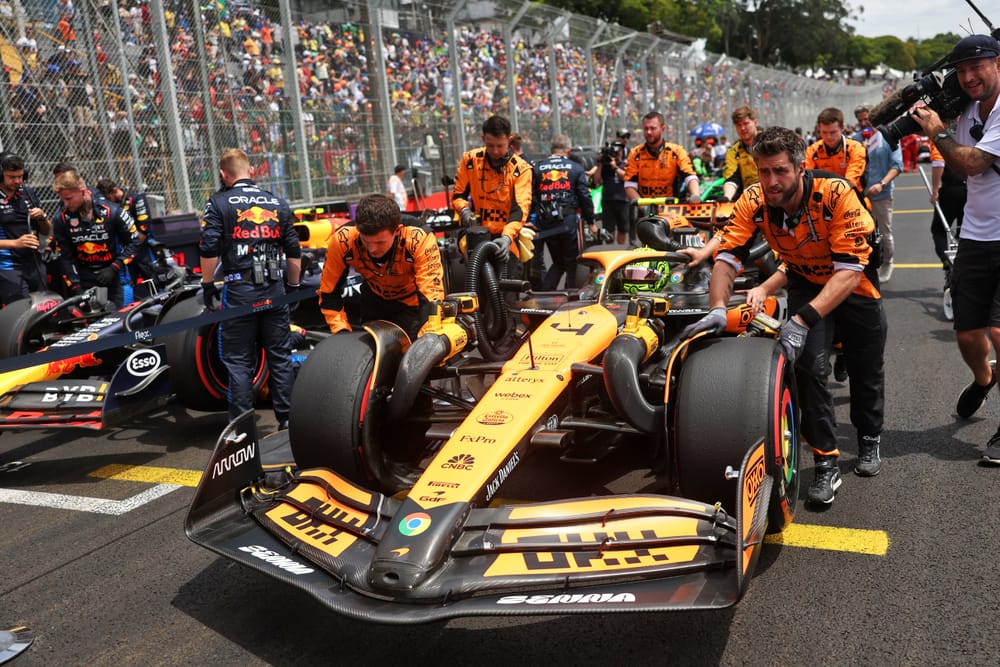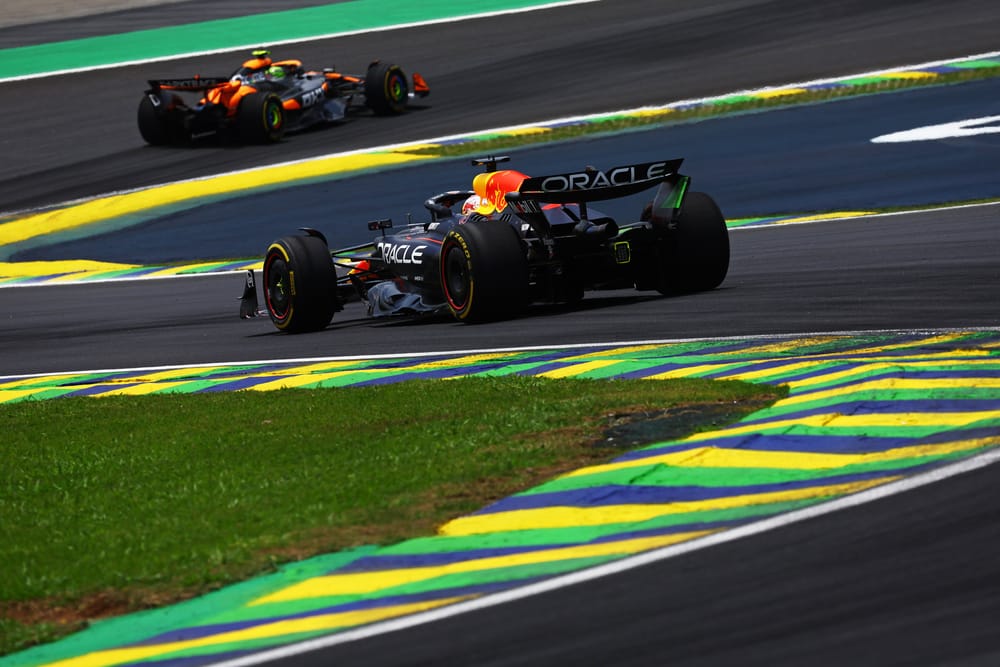Up Next

Red Bull’s confusion about its declining competitiveness this season has led to all sorts of suspicions about what rivals are doing, which isn’t unusual in Formula 1. But the concerns about McLaren and others using fluid in tyres doesn’t add up.
I’m not suggesting that any F1 team would get up to this level of skulduggery but if they did this might just be what happens.
In order to get an accurate volume of fluid into the tyre, you would have to deflate and then re-inflate the tyres. I don’t believe teams are allowed to do this once Pirelli has supplied them filled with dry air, beyond making small adjustments to ensure the pressures are right. But I don’t know how consistently or closely this is actually enforced. If teams are doing this, this is what the effect could or would be.
The tyres are heated in the blankets to 80 degrees Celsius while sitting on their side. The tiny amount of fluid that’s being talked about – maybe as little as 0.05 litres, wouldn’t be enough to fill the tyre sidewall well while they sit like this. Eighty degrees C is not enough to turn the water into vapour so I can’t see a connection between the tyre tread, which is what is being heated with the blankets, and the rim.
It's also worth remembering that any fluid that remains as fluid in the tyre would be subject to centrifugal forces, meaning that most of its life would be spent on the inside of the tyre tread. When the car is stationary, it would lie at the bottom again on the inside of the tread.

I can’t think of any instance when the car is running where this would be helpful to transfer heat from the side wall of the tyre to the rim.
However, on the circuit, if the internal surface of the tyre gets up to an excess of 100 degrees C then the ‘fluid’ – if it is water - would turn to vapour and might make for a better connection between the tyres’ inner surface and the rims inner surface, so that means possibly a better thermal connection.
To be able to get reasonably consistent pressures, the quantity of fluid would need to be controlled very accurately otherwise from set to set, it could be very different. And the tyre pressure is vital to performance, so you don’t want to have any inconsistency.
If the inner surface of the tyre and the rim was above 100 degrees centigrade for long enough, the majority of the fluid inside the tyre would probably boil off in use. The rest would be blown out through the valve as the tyre is deflated before stripping, so there would probably be very little evidence once that has happened.
In a way out, wacky world, it might just be possible. How consistent it would be, I don’t know, but I’m sure any team that might be trying it would put a lot more testing and development into it than me sitting on my sofa scratching my head!
The FIA is looking out for this now so if any team is doing this they will be caught out. Maybe that’s the main aim for Red Bull, to cause a fuss to make sure that nobody is doing that.
That all points to a team that’s struggling to understand why it’s no longer dominating and looking for reasons outside of its own development and car behaviour to explain it.





